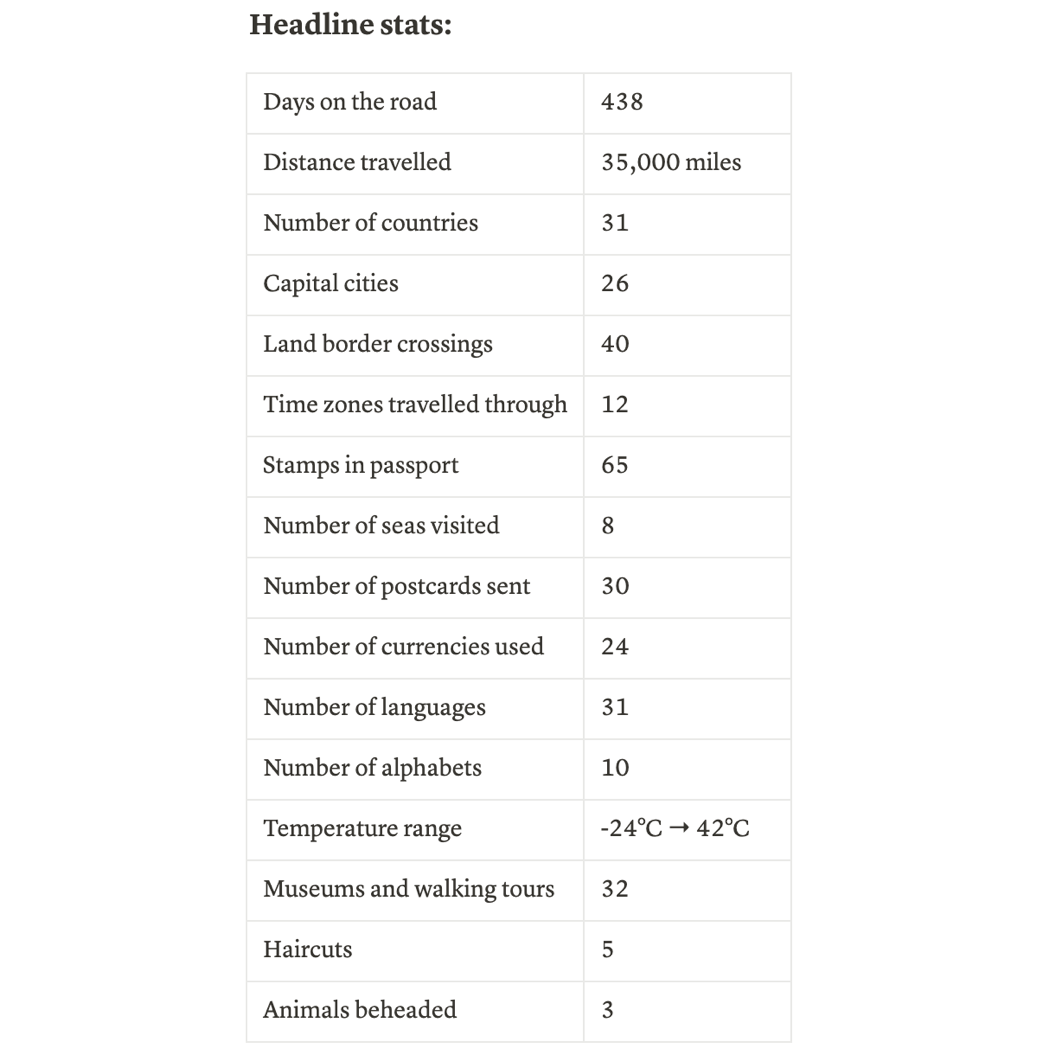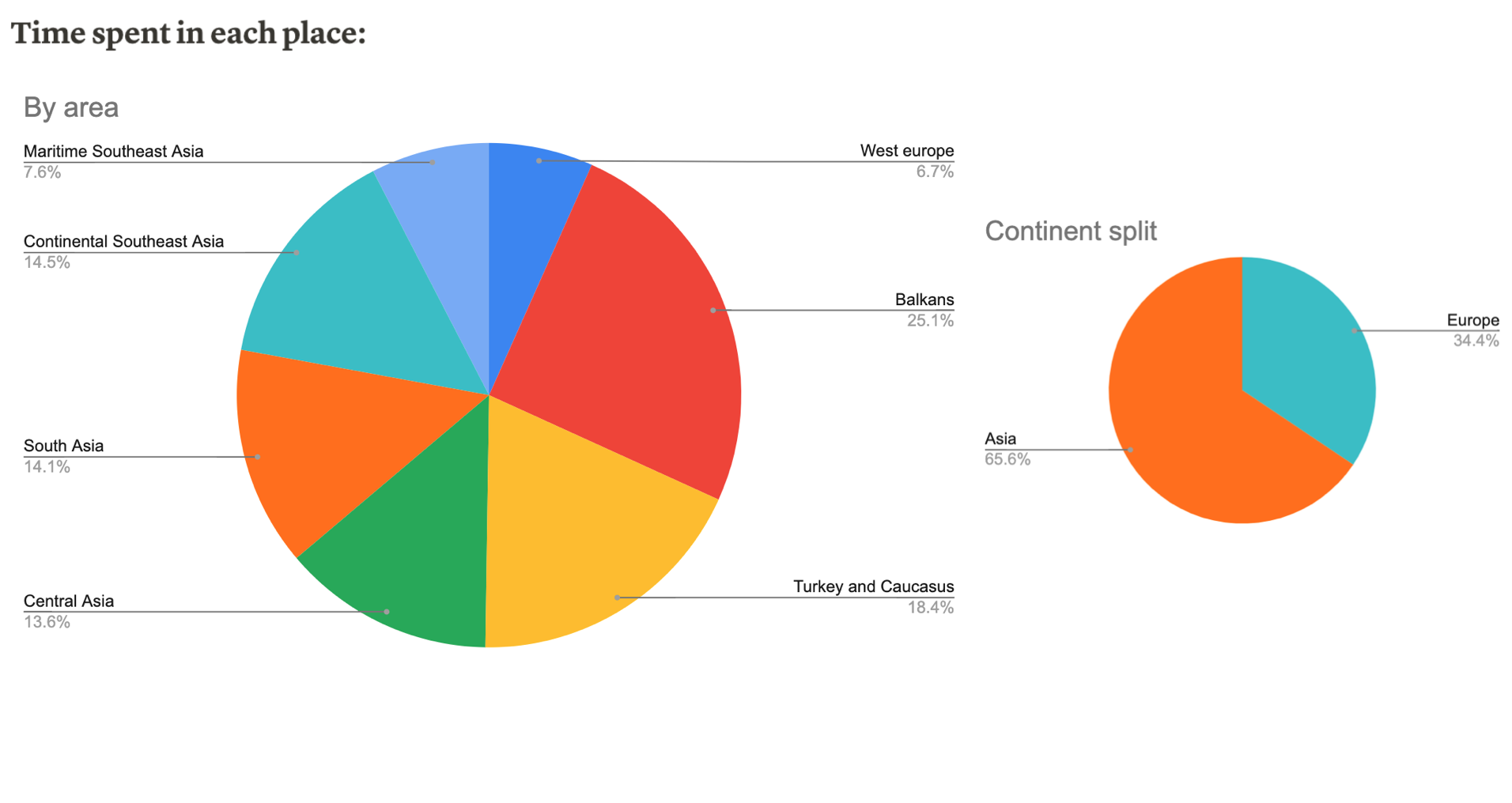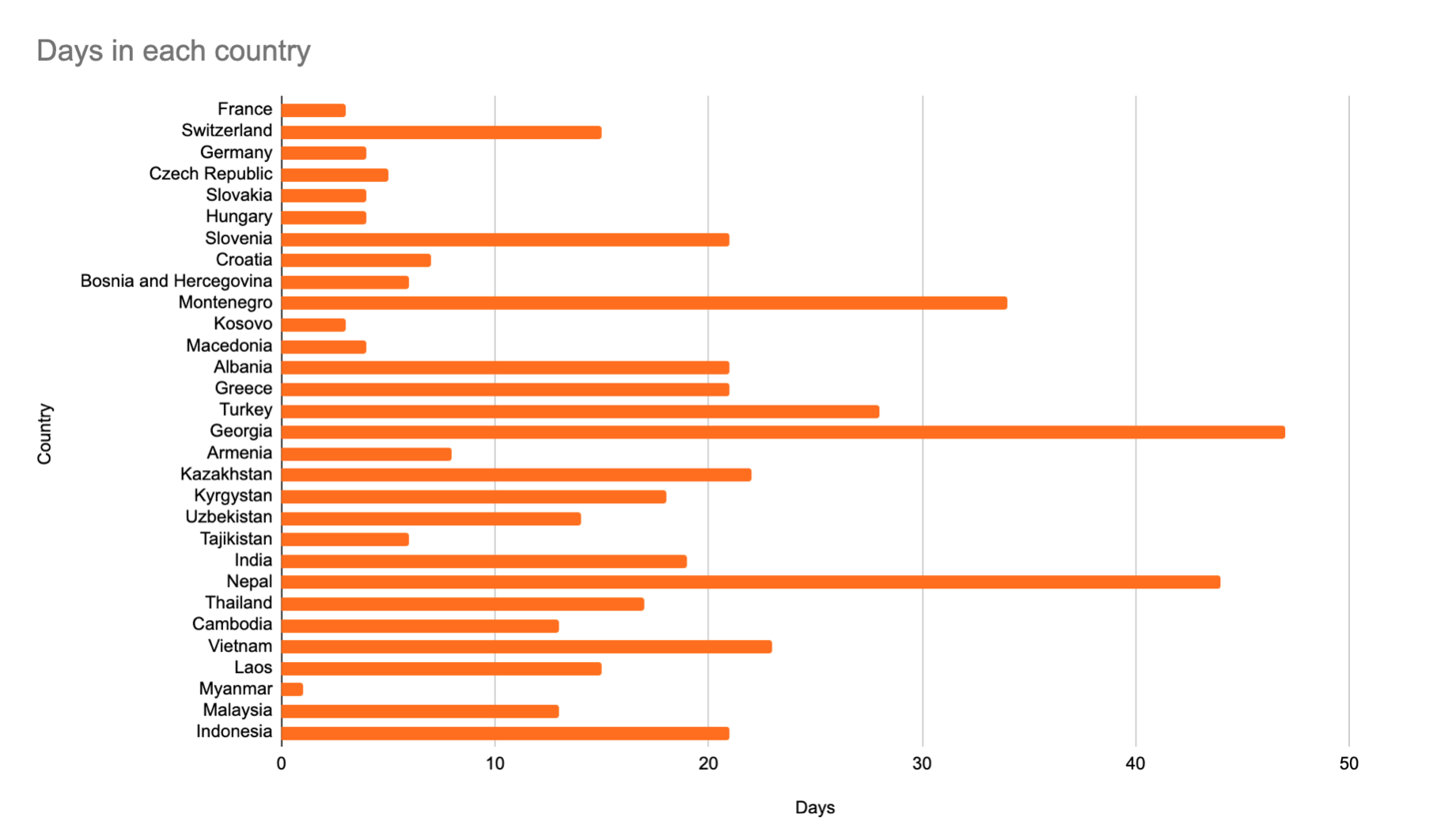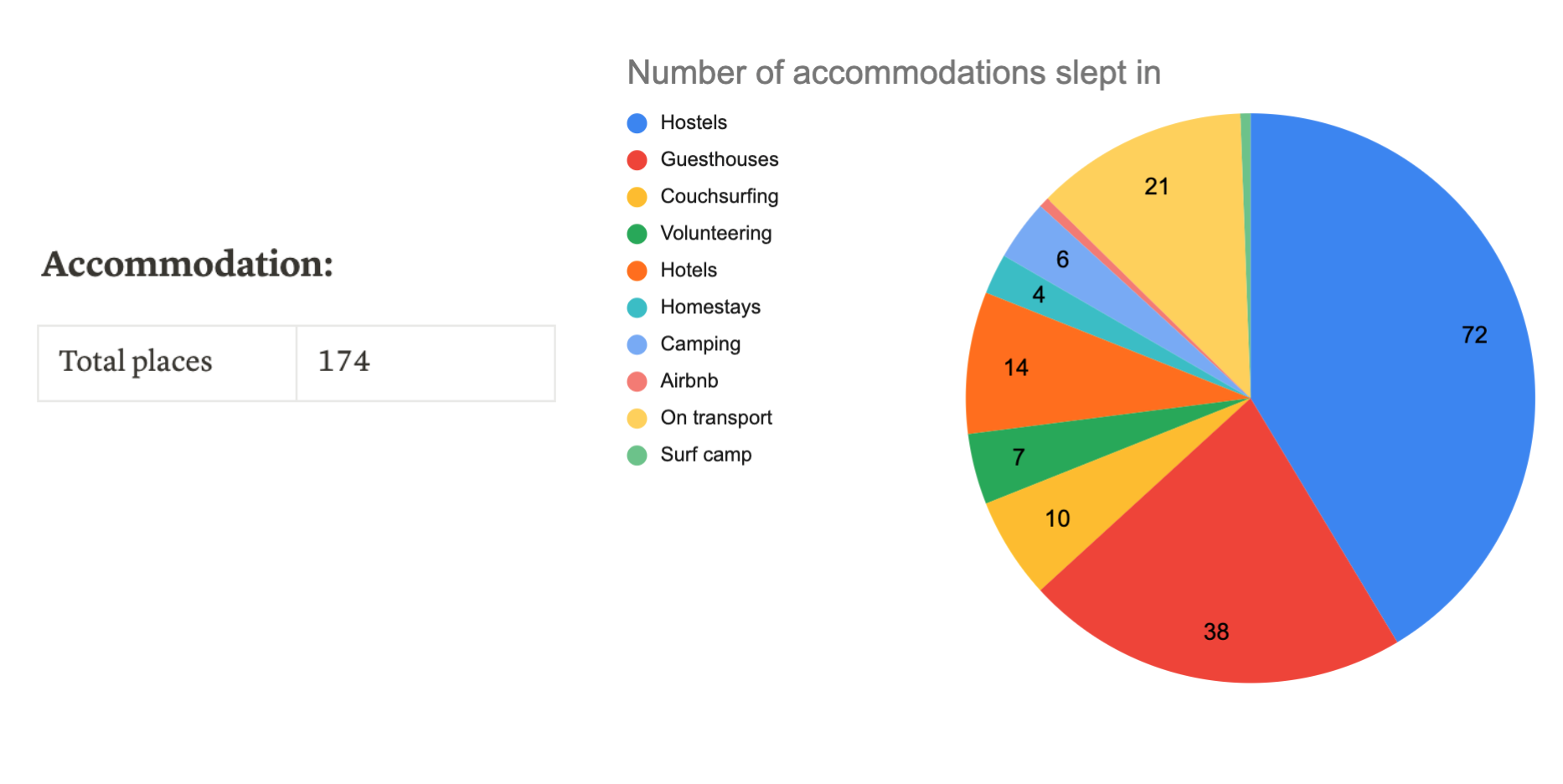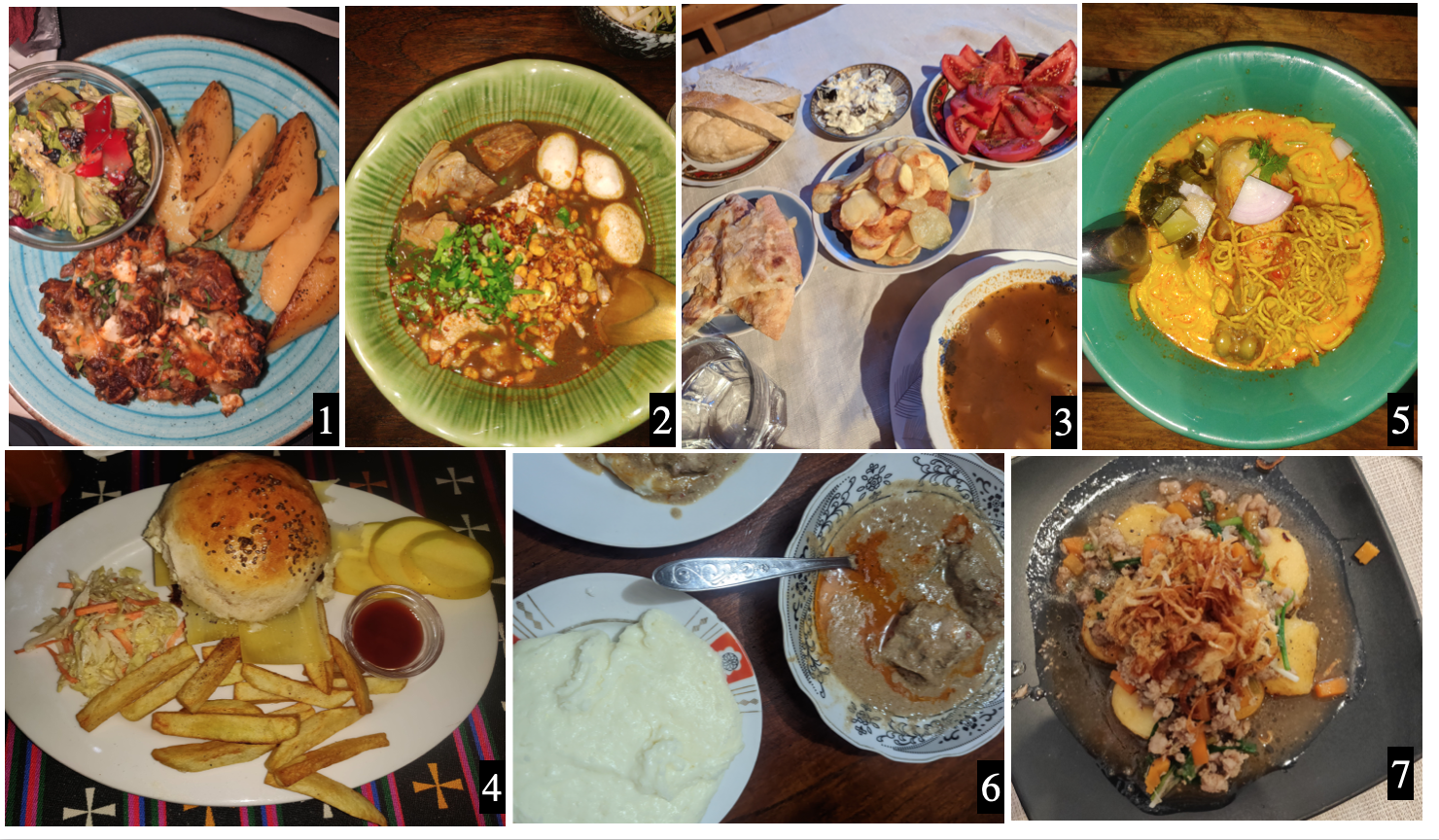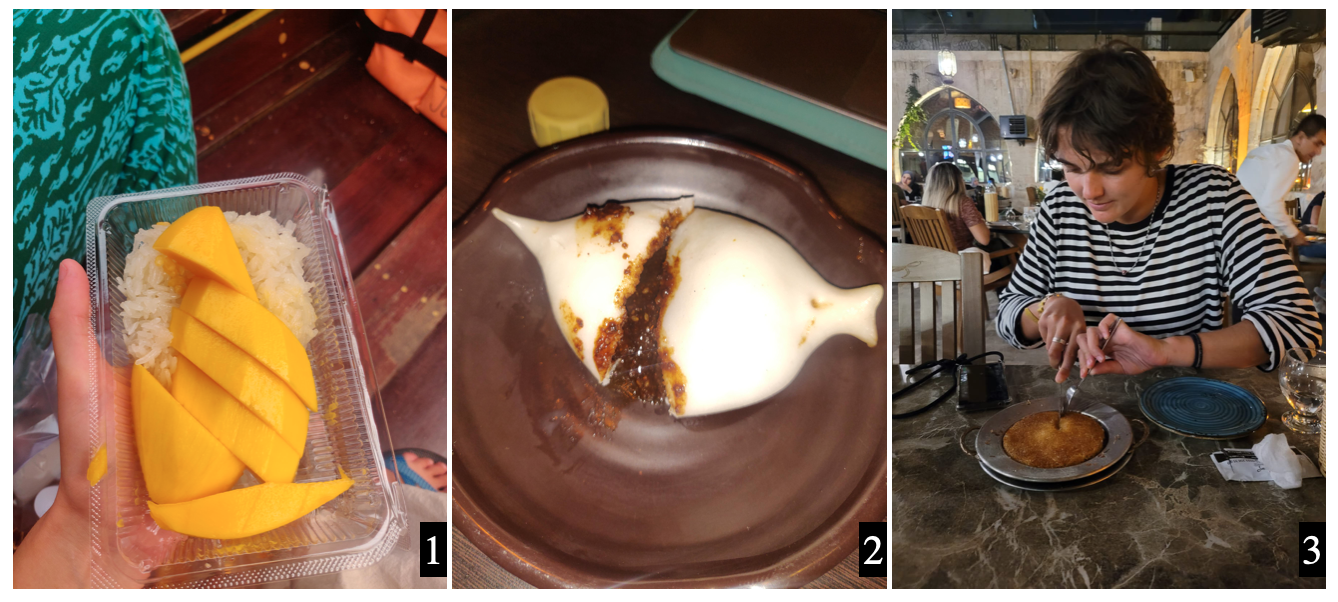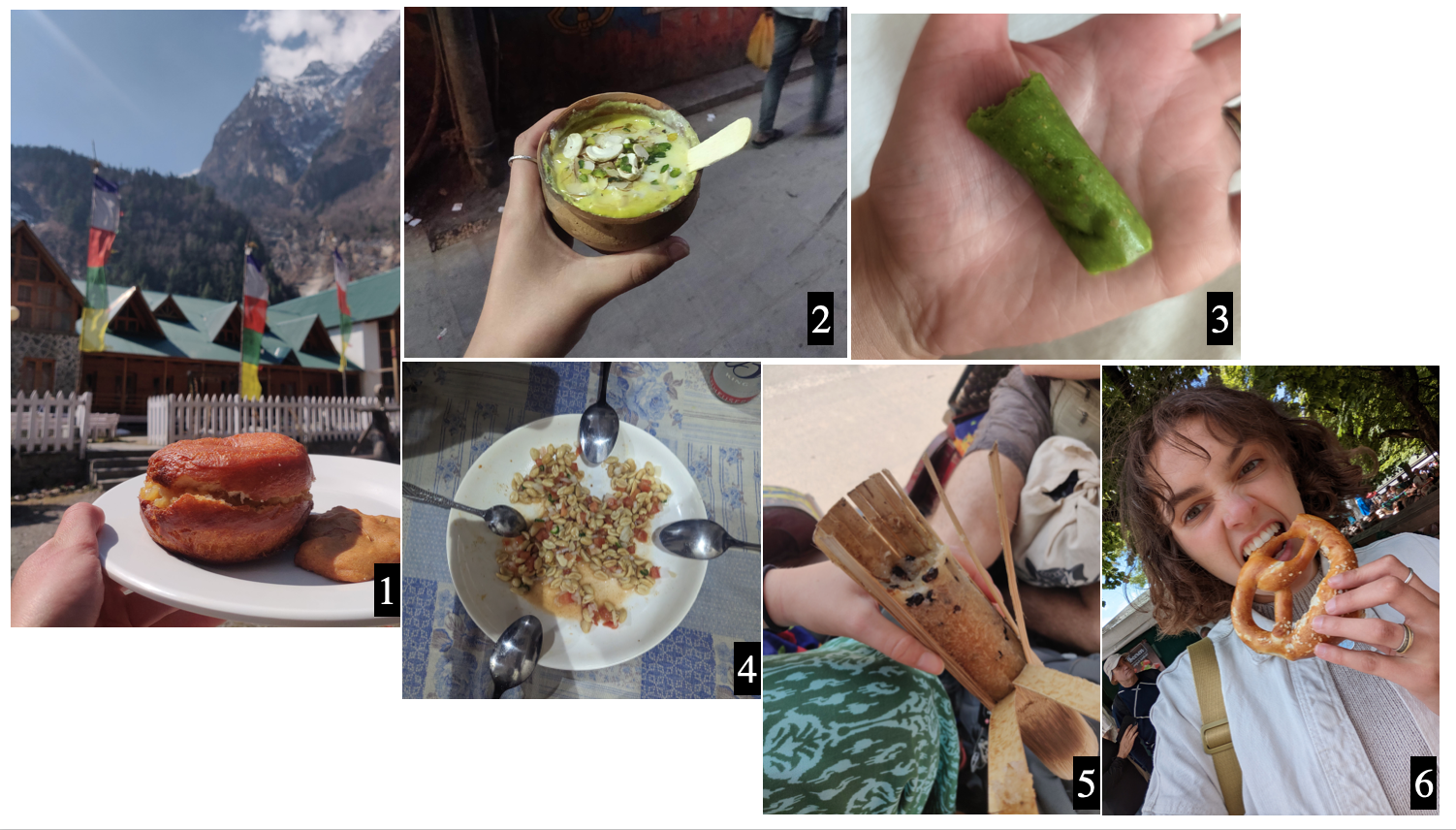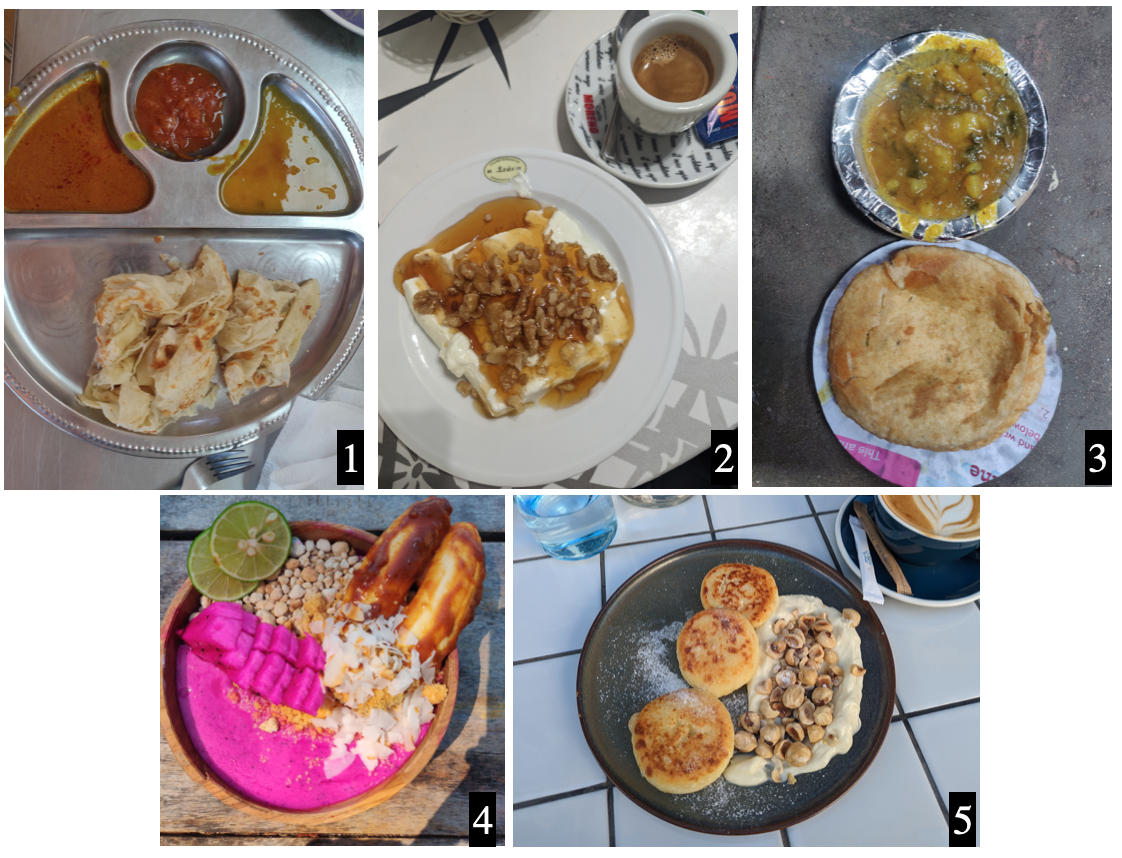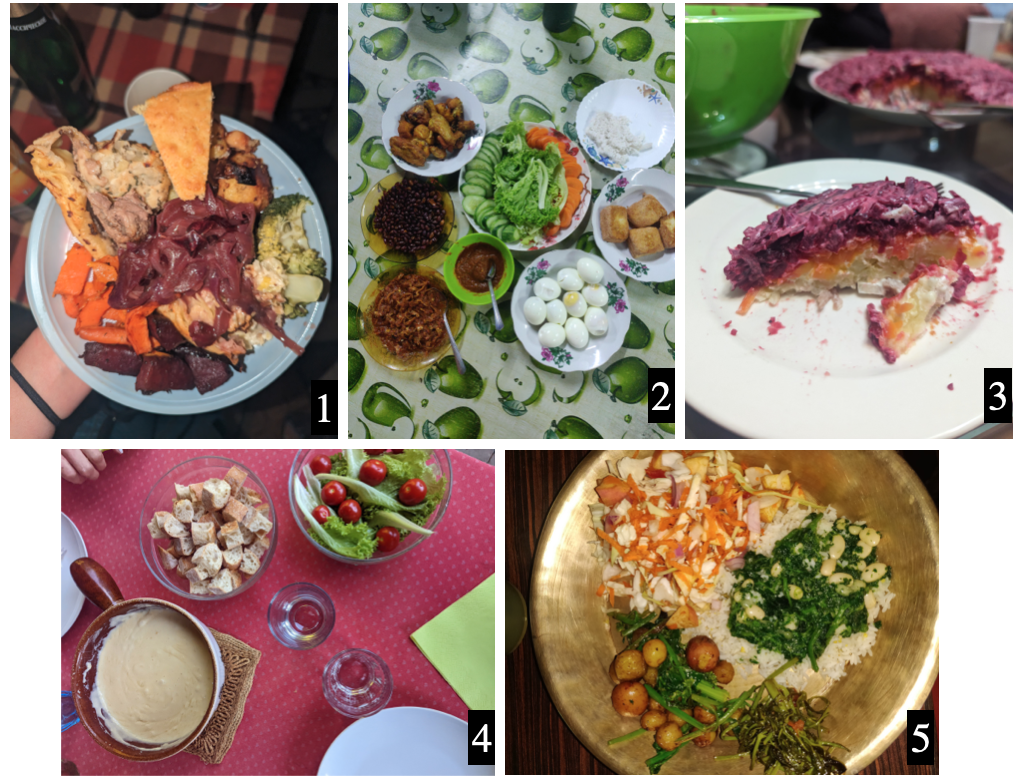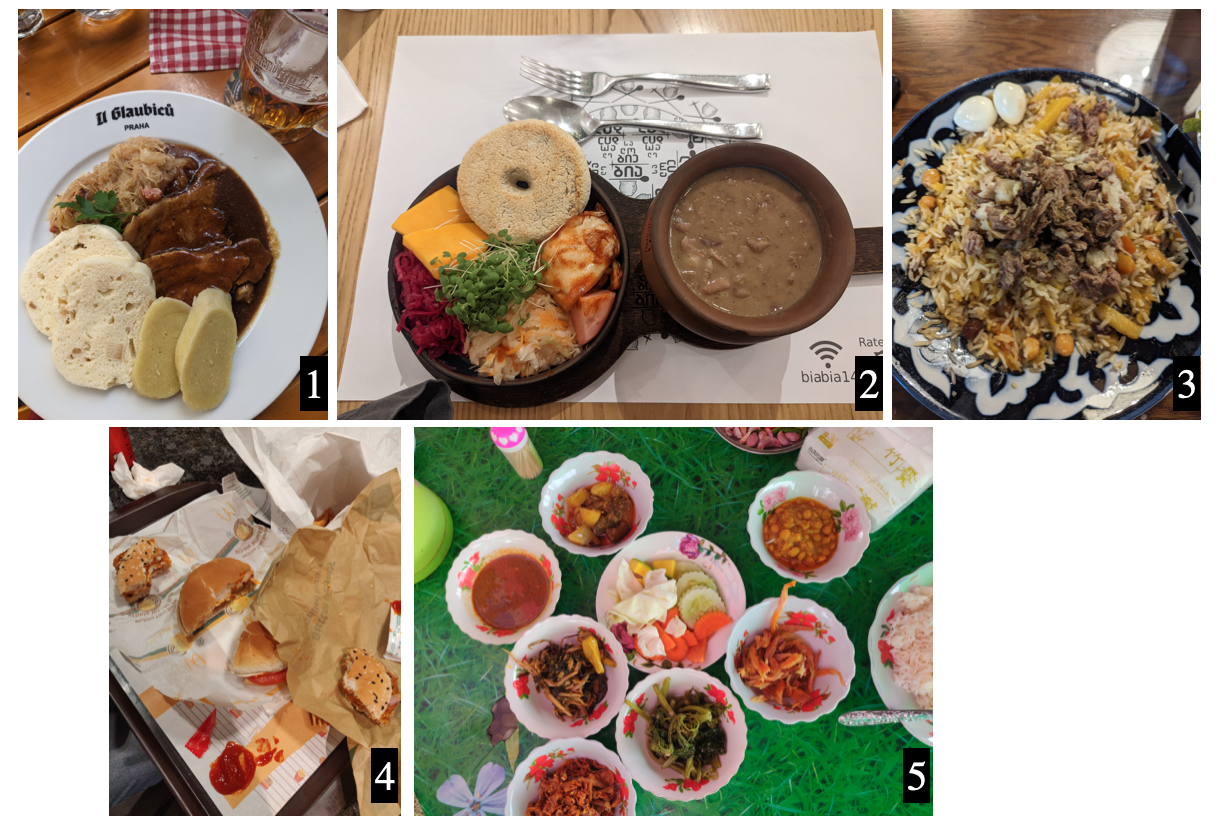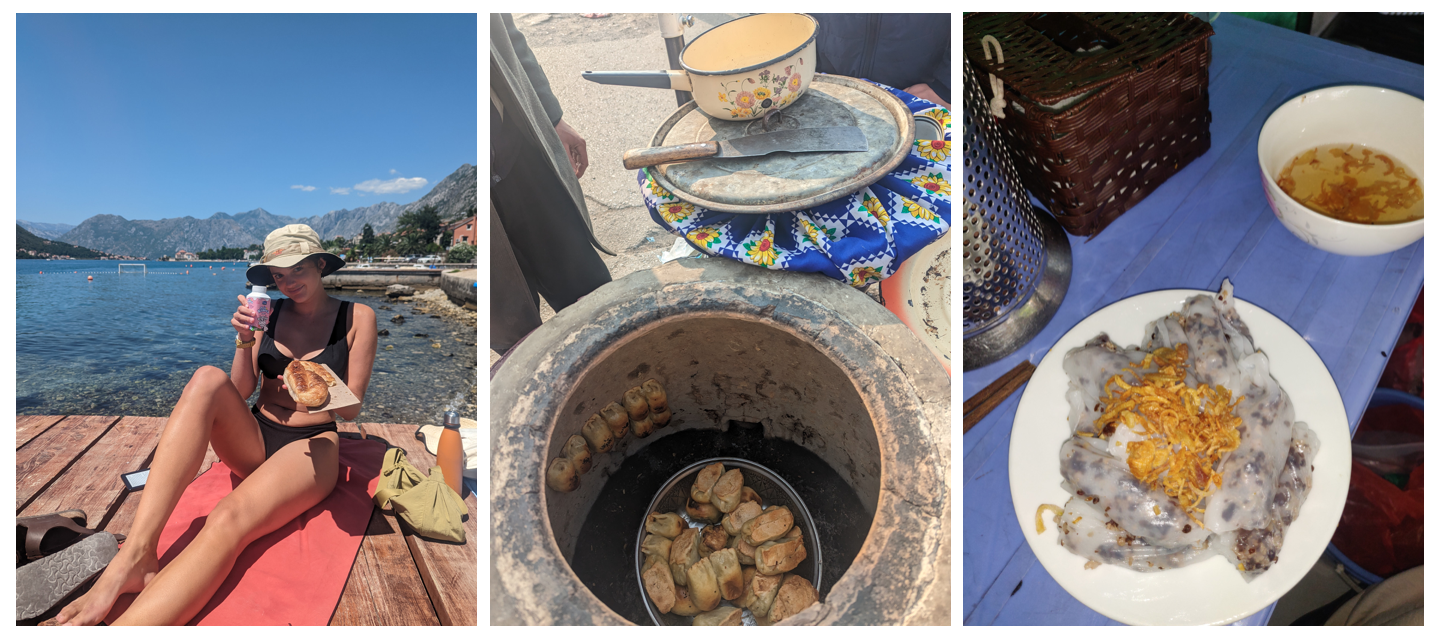Walking back from dinner one evening in Marrakech I stopped to take a photo of a cat who had sat on a table of items outside of a shop. The shop keeper laughed at it with me, saying he didn’t have the heart to move her. I looked into the shop and spotted a ring which I liked. On reaching a stalemate during the haggling I paused and noticed the music playing. It was incredible and I had never heard it before. I asked the man what it was and he said it was music from the Sahara. I exclaimed that I was going to go to the Sahara in a few days. He told me that he was from there, and showed me some photos. He gave me the number of his friend who lived there, in case I needed help whilst there. He agreed with my lower price for the ring and I wished him goodnight. The following morning I walked up the same street to get a coffee, noticing his shop again and catching his eye. I shouted out, asking if he would like a coffee as I was going to get one. He nodded and told me his order, giving me his glass to use. Carrying the piping hot cups back down the street to a chorus of “for me?” from the other men, and causing a stir with my answer “for Ali!”, I rushed back. Ali thanked me for the coffee and said I really should message his friend as he was a good person and would help. I said I might, and went to find the bus to the mountains. When I realised I’d messed up in assuming the mountains were on the way to the desert, both being south of Marrakech, I did message his friend, Youness, to ask for advice on the best way to get to M’Hamid (the desert town). Youness was incredibly helpful and I explained that I would like to camp in the desert too, which he confirmed was something he could help with. In the morning I let him know that I would be travelling by bus and didn’t have any data so wouldn’t be able to contact him again. He told me a cafe with a wifi I could go to once reaching M’Hamid. My plan was to go here and then check my messages and look for a guesthouse if necessary (I wasn’t sure if I was being invited to stay with Youness and what this situation would be exactly). After a 9.5 hour bus journey (passed pleasantly with audiobooks, journalling and this new sahara music) we arrived into M’Hamid. It was 9:15pm and I prepared myself to walk into the town and find the cafe. As I stepped off the bus I heard a soft “Meg?” and looked over to see two men stood back from the bus. One man with black curls dressed in a golden long traditional shirt looked bashfully at me through his long eyelashes, the second taller and slimmer with clever eyes. It took me a moment to register that this must be Youness and a friend (Mohamed it turned out). “I wasn’t expecting you! How kind” - as I walked towards them and made to shake their hands as is the usual greeting here. This put them at ease a little, but they still seemed nervous. They explained that they wanted to make sure I made it here okay, and could show me Youness’ house if I wanted, and I could decide if I’d like to stay there or not. I looked into both of their eyes and took a moment to consider this. I want to clarify that I understand that some of what I do seems reckless and dangerous. But it really isn’t. I choose to trust people who I feel that I can trust. You can tell a trustworthy person immediately, in my opinion anyway. I knew I could trust these two men completely, so did. I got into their car where another guy, Madi who was Mohamed’s brother, was waiting. Both Mohamed and Madi spoke exceptionally good english, Youness didn’t. We drove the short distance to the house and entered the gate. As we slowly pulled up I could make out through the dark that the house was a slight construction site. Interesting. We got out and I could feel Youness’ concern over my satisfaction with the house. He shuffled apprehensively as Mohamed explained that as the house was still under construction, there was no toilet, no shower, no sink. I assured them repeatedly that this was fine! Turning down the offer of going somewhere else or being taken to a friend’s camp to use their facilities. Walking through the entrance the first room was a full construction zone but the second was lovely. Warm and decorated. A cosy corner on one side, a kitchen on the other. A scattering of rugs and poufs filled the rest. The bedroom was perfect - a large, beautifully made bed behind a curtain and in a separate room. I could see how much effort had been made for my arrival. And even more become apparent as time went on: mineral water as they weren’t sure the village water would be okay for me; milk for me to have with my coffee; toilet roll to use outside; new pots of jam to have with breakfast. We sat and drank tea made by Youness. I said sugar was okay, something I regretted immensely over the next few days, resigned to having extremely sweet tea every time. Mohamed and I spoke about politics and spirituality and Islam, he was very clever. Madi was my age and fun. Youness was the most gentle man I’d ever met. When the tagine was served I insisted we ate together, and refused the plate and cutlery to eat with my hands with them. We talked late into the night before my yawns took over and I said I would like to sleep. I used the surrounding dunes as a bathroom, looking up at the stars, thinking of how wonderful the huge house would be once it was finished. For now the large Riad area was filled with sacks of dates. I smiled at my earlier resolve to stay in nicer places. I had my best night’s sleep of the entire trip.
In the morning I sleepily made my way into the dunes to wash my face, brush my teeth and go to the toilet. I took in my surroundings in the light of day - a construction site but a tidy one, the beginnings of beautiful gardens, stretches of palm trees and early desert behind, and small dunes in the immediate vicinity. The sun warmed me and I felt completely calm. After finishing yoga in the dunes and getting dressed, I walked outside to find a small white metal table in a circle of palm trees. On it, a marvellous breakfast spread.
I spent the next three days with these men and I fell completely into desert life. They gave me a Moroccan name: Leyla, meaning night in arabic. A part from Mohamed, this was the name used for me until I returned to Marrakech. It was strange to be introduced as Leyla, but I got used to it. I had the most incredible time living in this house with Youness. I learnt how to cook tagines and make Moroccan salads. I sunbathed and read in the dunes. I started each morning with yoga in the quiet of the sand. I journaled on the small white table. I spoke with the different men and nomads who visited the house for tea, playing with a little girl that came with one of them. When it was just Youness and I at home, two small birds would join us inside and sit on the table as we ate.
After lunch on my first day it was time to head into the desert. As I was short on time, we were to take a car rather than camels. With Madi driving, me sat in front and Youness in the back we set off, driving to the end of the road and then beyond into the desert. Youness told us about the different plants that we passed and their medicinal uses. He pointed out the last souk before the Great Sahara. The desert started quite rocky and open, small dunes here and there and a lot of palm trees. The palms soon stopped and the dunes became dominant. We stopped to collect wood and I helped. I enjoyed the strength of the sun through my watering eyes. As the rocks fell away and only dunes remained we skated over them in the car, with the feeling being amazing. We got closer to the big dune, Erg Zahar. Youness told us that the name Zahar means making a “zzz” sound in arabic as the nomads heard such a sound from the dune. They thought there was a monster living inside but it’s simply the sound the sand makes as it moves in the wind. We started looking for the perfect place to stay, skating across the dunes. Madi driving skilfully and Youness giving the directions. At times I thought we’d certainly become stuck in the basin of dunes, but I was never concerned. I trusted the two of them completely. Eventually, we found the perfect pocket in the dunes and Madi informed me of this with “this is our place”.
We set up camp here, putting up a canvas tent and laying out large blankets. Youness started a fire so quickly I missed it by blinking. He made tea with the teapot directly on the fire, the nomad way. He was clearly in his element. Madi and I went to climb the big dune to watch the sunset. It was hard work to the top, but I beat Madi. We joined the many people at the top and found a quiet spot. We spoke about Madi’s previous job as a nurse, about his plans to travel around Africa, and how Morocco is culturally closer to the middle east than Africa. Friends of Madi joined us and I left them to talk and took in the sunset silently. I could see the Algerian border beyond the dunes. The sun disappeared and some people clapped. Madi and I, hand in hand, ran down the dune and back to Youness. He was now in full desert mode, turban on, fire roaring with the teapot on one pile of burning ash, the tagine on a second and a large pot on the third. I watched the reflections of the flames in the teapot. I watched Youness do the ritual of pouring the tea from glass to glass and back into the pot. We drank the tea and smoked kief from a pipe. The stars started to appear and I lay back to take them in, softly high and in awe. We ate harira (the good version) and then goat tagine. Youness and Madi sang nomad songs in beautiful arabic, using a water container as a drum. I accepted the offer of sleeping under the stars rather than in the tent and changed into warmer clothes and got ready for bed. Under two blankets I felt suitably cosy but Youness placed a third over me. I wished them both goodnight and took in the stars again. I couldn’t believe how many there were. My eyes were heavy but I forced them open a little longer. I fell asleep easily, feeling the warm breeze of the fire at my feet on my exposed face, and although it was a little cold during the night, it was one of the best night’s sleep of my life.
I woke and opened my eyes to see the start of light on the bottom of the horizon and the stars disappearing. I cuddled in closer under the blankets and fell back asleep. I woke for a second time in full light, although the sun still hadn’t risen. At my feet the fire blazed again with Youness crouched next to it, making tea like always. I watched him for a while before he noticed I was awake and smiled at me with his eyes surrounded by turban. He must’ve been so careful and quiet not to wake me. I sat up, stretching and wished him good morning. He asked if there had been animals in the night. I shook my head no. He looked around and said maybe I’d slept through them. Choosing not to dwell on this thought I got up and walked up one of the surrounding dunes. The sand was cold through my socks. I watched the sunrise, occasionally glancing back to the camp and Youness at work. It was all so beautiful. I ran back down the dune to the camp, arms wide and with a huge smile. Youness made eggs on the fire and we ate breakfast together like usual. I left them to clean up and walked up a different dune to do yoga. What a place for it. I danced in the dune and breathed in the sun and the sand and the sky. I understood their love of the desert now, and loved it too. I returned to the now packed up camp and we got into the car and drove away, sahara music playing. Once we’d left the big dunes behind I got behind the wheel and enjoyed driving over the small dunes, gliding around the corners.
Back at the house I went to look around the village. It was dusty and not pretty and I felt uneasy with the eyes of the men on me. I finished my shopping, I bought chocolate and bananas to cook on the fire that evening, and hurried back to the safety of the house. That afternoon Mohamed brought one of his camels over for me to ride. After hearing so many wonderful things about the animals I decided I didn’t want to ride it, so Youness and I instead took Raisha (the camel) for a walk. We walked out through the dunes behind the house for a long way, until we reached a Kasbah (an old village). Here we tied up Raisha and Youness showed me around. We saw an old mosque where the roof had collapsed and the old men gathered inside. A back and forth song-like exchange took place between them and Youness. As we walked through the dark spots I felt a small hand slip into mine, a little boy who had followed us in. He pulled it away in the light. The Kasbah used to be home to the Jewish community but they had now left. Now it was home to Africans from other parts of Africa, brought here in the slave trade. There were so many children running around. At a small shop Youness bought them all chocolate bars. They ripped them open and dropped the wrappers to the ground. The sun was setting and we rushed over to the dunes to sit and watch. Silently we observed it disappearing behind the clouds, no clear sky today. We spoke about Islam and I shocked Youness with my lack of faith. We spoke about love and I shocked Youness with the concept of dating. We spoke about feminism and I shocked Youness with my want to always work, even if I was married and had children. I liked Youness a lot, his presence was so calming and so gentle. In a different place I would have kissed him whilst sat there on the dune. But I didn’t know what a kiss meant here, and if it was consent to more. So, whilst I wished to lie against him on the dune or to take his hand on the dark walk back to the house, I didn’t.
On my last night in the desert we had a fire on the small dunes by the house. I made chocolate filled bananas and cooked them in foil on the ash. Youness and I together made sand bread. This was very cool! We moved the fire to one side and dug a shallow hole in the sand, placing the circle of dough down and covering it back up with the hot sand and a layer of ash. We waited and watched the mound grow as the bread rose. Clearing the ash and sand away, a perfect loaf of bread was unveiled. Youness brushed it down and used a knife to remove the sand from any small ridges. He broke off a piece for me and it was warm and spongy and delicious. We ate it with our tagine.
Youness needed to tie up Raisha for the night but couldn’t find him. I smiled to myself as I helped him hunt for the camel, amused at how one could lose a camel. He told me more about the nomad tradition of tea. Of how pouring the tea back and forth between the cups and the pot created a foam which acted as a sieve for any sand or camel hair. Of how three cups should be had, one for the dead, one for the living and one for the spirit. I looked at the stars again and thought about what Mohamed had told me about nomads believing everyone had a star which appeared when they were born. If your star was unstable it meant you were to lead a disruptive life, being a leader or discovering something important or other such thing.
On the morning I headed back to Marrakech Youness gave me the necklace he wore. I tried to refuse, knowing it was his grandma’s, but he insisted. He carried my bags to the taxi station for me and I gave him a tight hug goodbye, watching sadly as he walked away and I lowered into my seat. I let myself feel how sad I felt as the taxi drove away from the desert. I even cried a few soft tears. I questioned why, was it because it was the end of my trip? But no, it was because I was leaving this place in the desert and this man.
I am so glad I asked about the music playing in Ali’s shop. I am so glad I trusted my intuition in trusting these men. I am so glad I experienced the desert in this way. As you can perhaps tell, I fell a bit in love with the desert and plan to return and spend longer in the dunes, travelling across it as a nomad.
